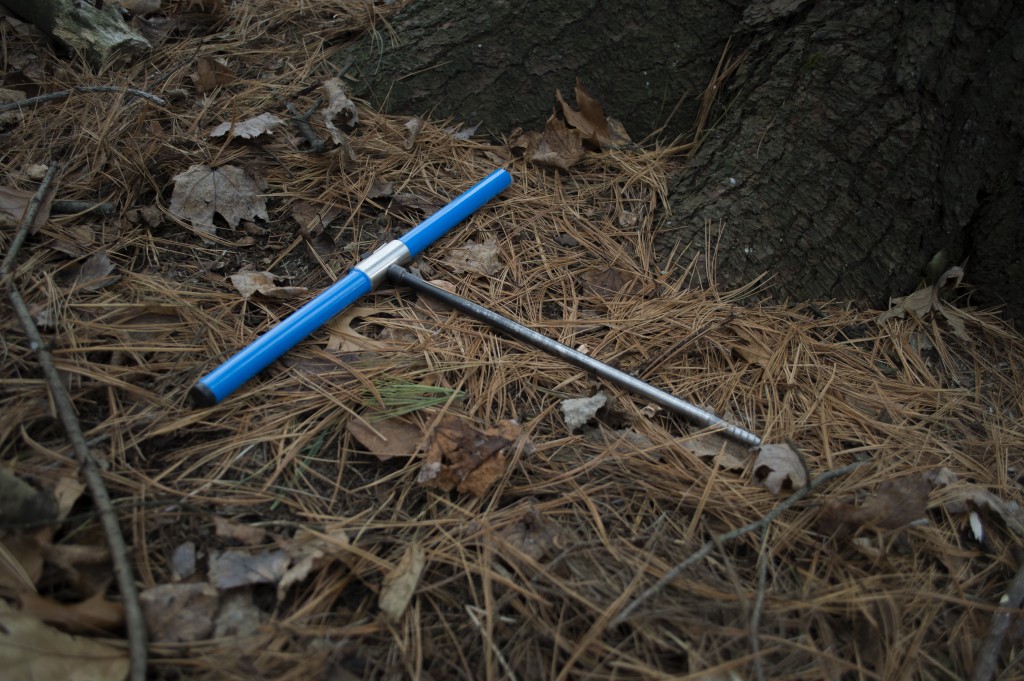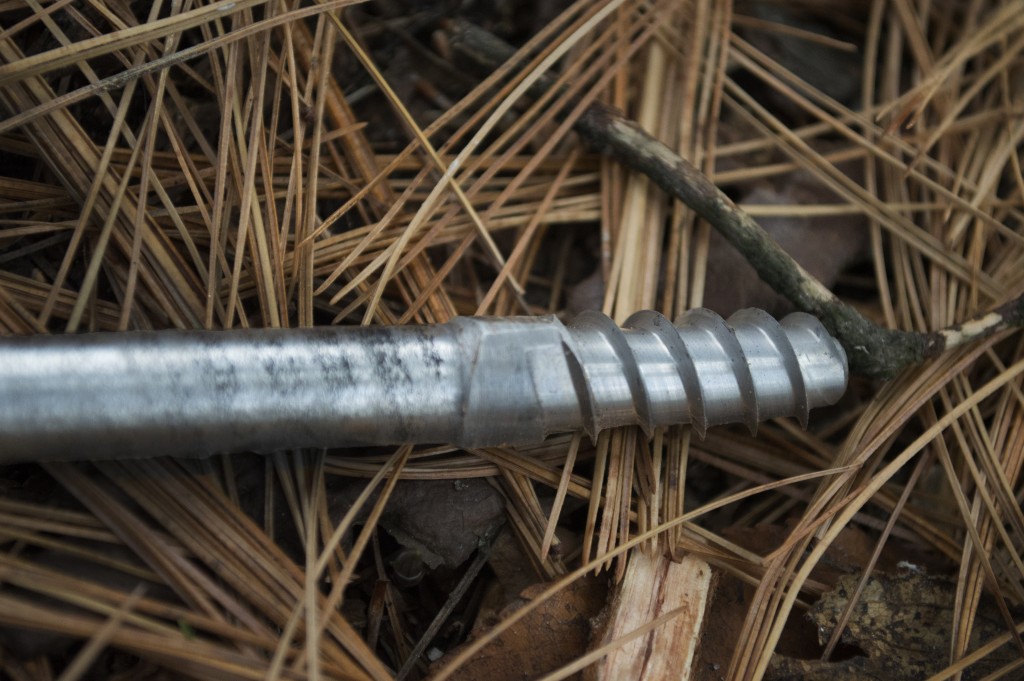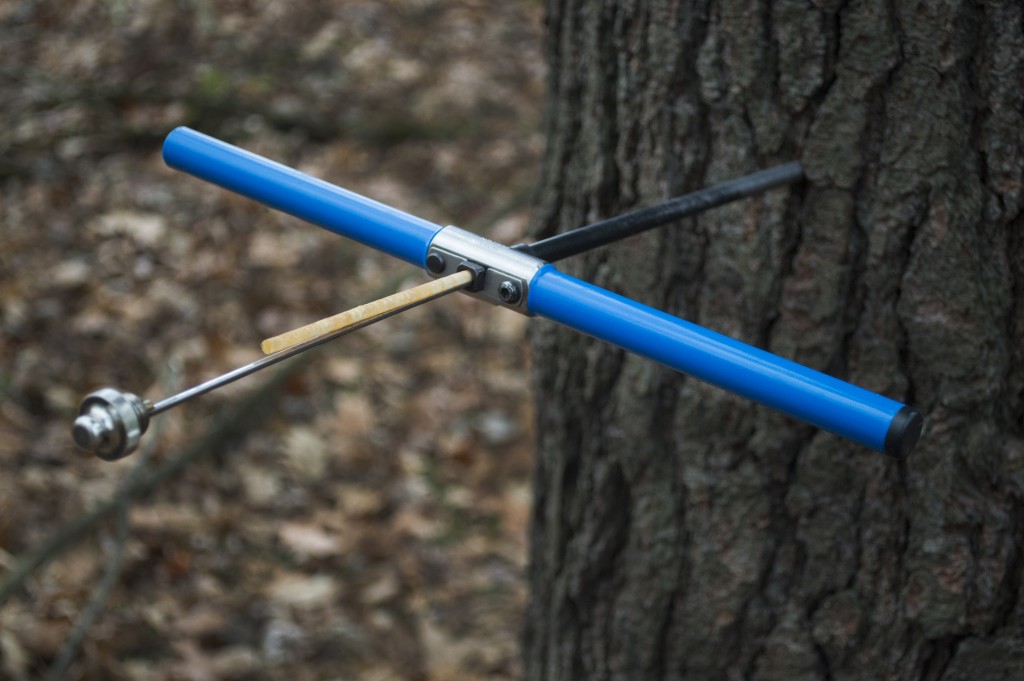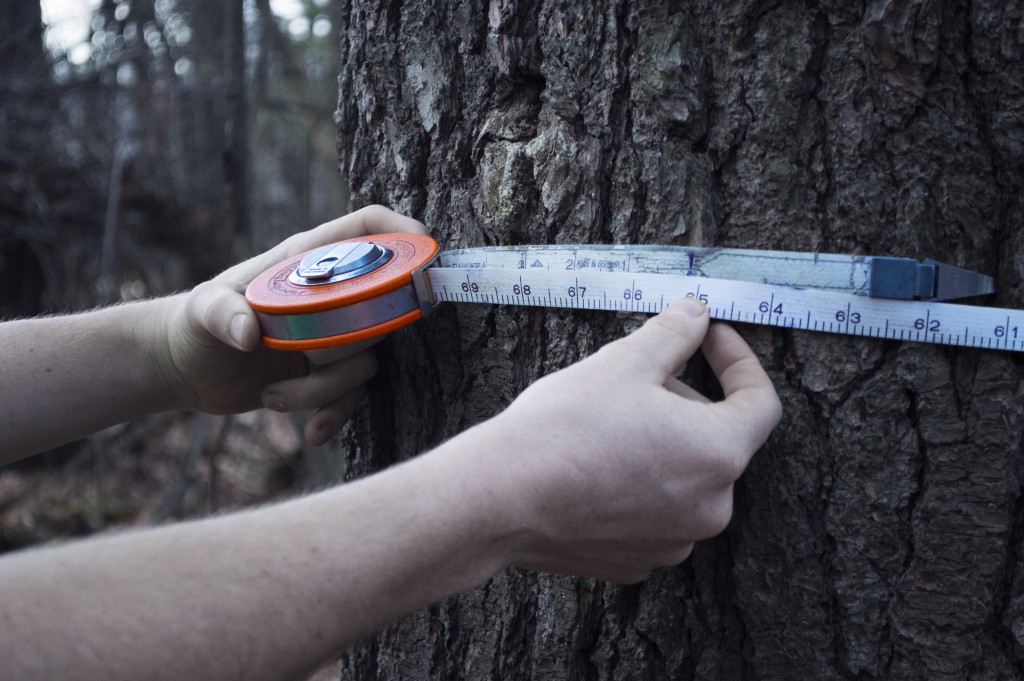Introduction
I frequently tramped eight or ten miles through the deepest snow to keep an appointment with a beech-tree, or a yellow birch, or an old acquaintance among the pines.
~Henry David Thoreau
Field work for the dendrochronologist is the heart of a poetic endeavor into the ties of history; told internally by perhaps the most venerable woodland inhabitants. Each tree serves as a picturesque, living capsule, allowing for regeneration of previous climates, events, and atmospheric conditions, among others. As the artist walks into the field, he/ she has the role of interpreter. Within each tree lies a potential key to unlimited connections; it is the responsibility of the dendrochronologist to listen– given a set of inherent cues– and to select for those with the most to say. With a humble set of tools and an ear and an eye, the dendrochronologist rewrites history.
Materials
Borer:
This is the tool that dendrochronologists use to take cores (samples) from trees that they want to study.
Screw:
The hylical threads at the end of the borer that pulls it into the wood.
Spoon:
The spoon is inserted into the tube of the core. It has small teeth at the end of it to pull the wood core from the borer.
Diameter at Breast Height (DBH) Tape Measure:
A tape measure that measures the approximate diameter (including bark thickness) of a tree based on its circumference
Straws:
Each core gets its own straw to protect it. The straw is labeled with a site indicator, tree species, core I.D. and the date at which the core was taken
Process
- First pick a field site using standard principles of site selection.
- Choose the trees for the study. White Pine (Pinus strobus) trees were chosen based on their health and growth.
- Collect cores. Two cores were collected per tree and each tree was healthy. Students used an increment borer to bore a sample into the side of the tree, a spoon to withdraw the core, and a straw to capture and safely hold the core. The core that was pulled out in the spoon was placed immediately into a labeled straw to house the core safely.
- Label the straws. Each straw was labeled using a permanent marker for each tree core, each with a corresponding letter and number, along with the abbreviation of the tree species, the date, initials of the site’s name, and student’s initials.
- Collect diameter at breast height measurements. Students located a place on the tree at breast height to take the core sample and measured the width needed to reach the pith. The healthiest place was usually perpendicular of the slope and above a tree root.
- Write down site observations. Notes should include: measurements of the diameter, height of bore hole, notes on the locations, and GPS coordinates of each tree.
- Bring data back to lab. All the cores were collected and carried back to the lab.




